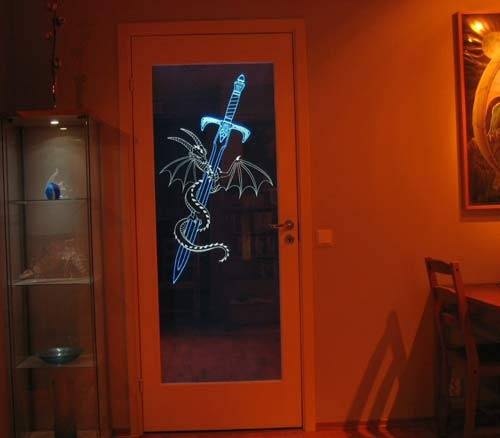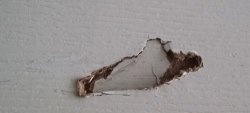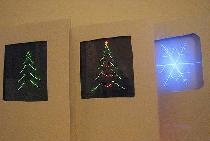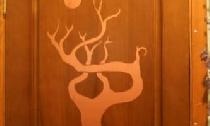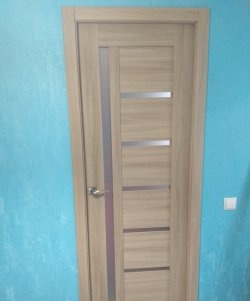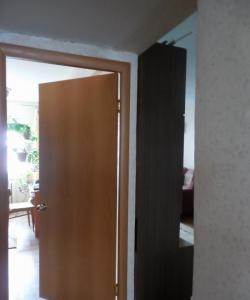Once I made a door with a glow-in-the-dark pattern for the opening between the hallway and the living room. At first everything was fine, but the door showed several flaws.
Firstly, after the wood dried, it bent slightly (I thought the glued wood sandwich would prevent this, but alas... I was wrong...)
In addition, it had only one layer of organic glass. The problem is that if the glass gets dirty, the dirt also starts to glow. This also applies to fingerprints. As luck would have it, both the guests and my family try to touch the glass...
Finally, faced with these problems, I decided to make a new door.
This time I decided to use cheap boards to keep the door straight and stable. In addition, I used four layers of glass - two outer layers 3 mm thick made of polished glass and two inner layers 3 mm thick made of plexiglass, on which the design is engraved. I had to use plexiglass because it conducts light better than regular glass.
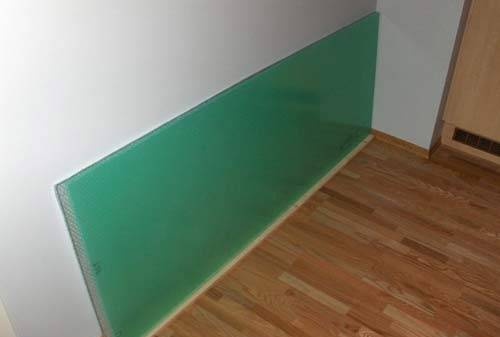
These are four sheets of glass (it was not easy to get them home, but that's another story). By the way, they are green because they are covered with protective plastic.
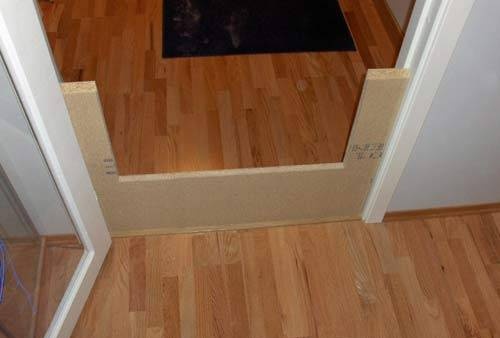
This is the first piece of cheap wood cut to the desired shape. In fact, nothing interesting - you keep sawing and sawing... In addition, I had to use a milling machine to cut 2 mm from all the boards: I bought boards with a thickness of 22 mm, and the thickness of the door was 40 mm. A hell of a lot of fuss. In addition, it was necessary to cut grooves for the glass. Unfortunately, I did not film this process, but on the other hand, there is nothing interesting in it.

All boards have already been cut to the required shape. In addition, there are grooves cut into the two boards in the middle. As you can see, the middle layer of cheap boards uses larger chips. I will talk about this in more detail later...

This is the bottom of the door. Since the door is quite heavy, I was afraid that ordinary wood screws would not hold up, so I cut small grooves between two layers of wooden boards and glued three M5 nuts and spacers into them (A4 stainless steel - just to be sure). Below is a photo of the slots for two 6mm nuts and two threaded rods. They serve as a support for the glass. The glass is fed through the bottom of the door (it would be easier from above, but this is not possible due to the high structural strength of the frame). Under the glass there is a board and two threaded rods. There is also a piece of wood between them to strengthen the structure and distribute the weight.
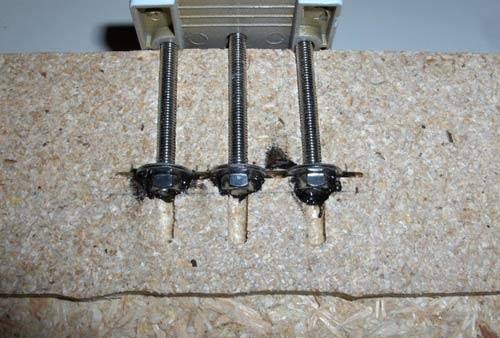
Close-up shot of the hinge nuts and spacers. The hinge itself and the screws are already screwed in place to ensure that the nuts stick in the right place.

Everything is glued together and filled with filler.

Close-up shot of the glass grooves. I had to use filler to level the surface because the boards are less dense in the middle. I also carefully filed the edge using a router.I was hoping there would be enough paint to fill in all the imperfections and make the wood smooth... alas, it didn't work out that way. Here, too, we had to use filler (again, no photos...).

LEDs! To be precise - 120 pieces, 60 blue and 60 white. They will illuminate the glass.
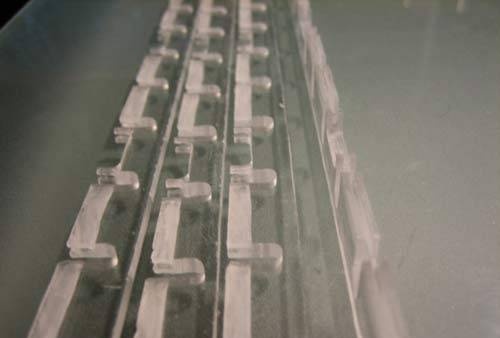
Holders for LEDs, made from strips of plexiglass 3 mm thick measuring 1 x 62 cm. I cut a hole for each LED and for each resistor (one resistor for three LED). In addition, I had to cut a groove for the cord. It will be located above and below the glass, under the weight of one sheet of plexiglass.
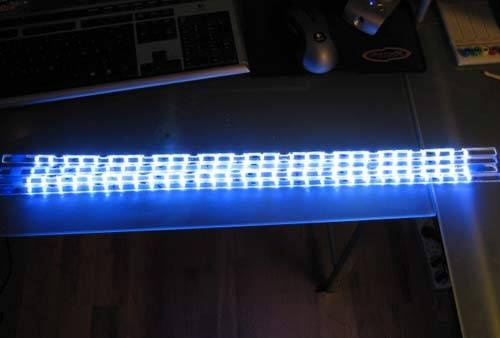
Glows!
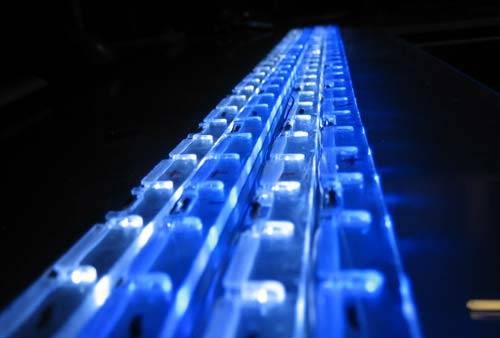
A close-up shot of strips with LEDs looks like an artistic photograph. Whites seem bluish - forgot to adjust the white balance on the camera...
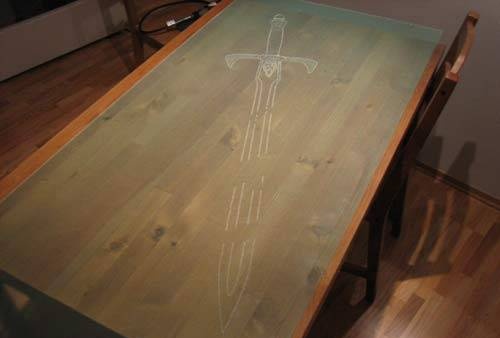
This is the first layer of glass with a design engraved on it (it will be blue).
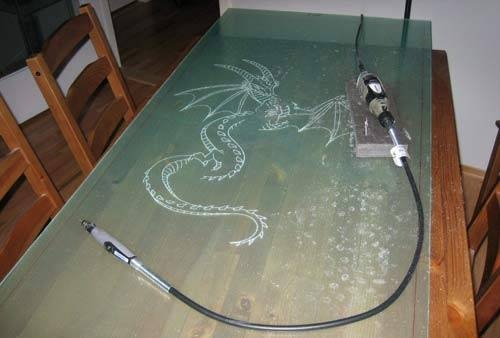
... And the second layer (it will be white).

Both layers connected to each other. The engraving is located on both sheets on different sides. Ideally, it would be great to engrave the design on both sheets on the same side, but in this case the image would look great at a right angle, but would double when viewed at an angle (the designs would be 3mm off each other).
Therefore, those sides on which the design is carved are located facing each other. The problem is that the drawing appears somewhat clearer on one side than the other. True, in the end everything turned out to be not as scary as I expected.
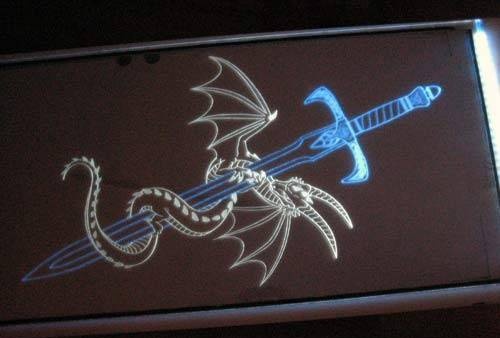
This is a very bad photo of the first try LEDs. All four sheets of glass are placed on top of each other. The black edge visible in the photo is electrical tape that serves as a gasket/seal.
By the way, this entire structure lies on a different door - not on the one I am replacing.

Here you can see how the light is distributed across the glass. The outer glass does not transmit light at all, but plexiglass allows two different colors to pass through. The light scatters much less than I expected. In fact, the blue color is much “purer”, it’s just that my camera was not able to capture the pure blue glow of the LEDs.
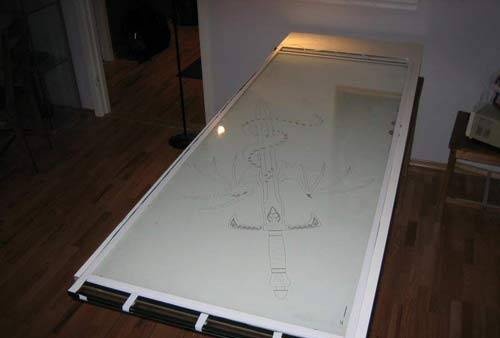
This is a ready-made “sandwich”. The white film ensures that the glass will adhere tightly to the wooden frame of the door.
Unfortunately, I was not able to completely clean the glass. If you look at it at an angle, there is visible dirt on it. But, fortunately, this is not fatal.
It turned out that the “sandwich” turned out to be even too dense - I had to press hard on the glass to squeeze it into the frame (and add so much grease that any nightclub would be jealous). In the end, I managed to push the glass into the frame, but time will tell whether I will be able to pull it out. I hope I never have to take it out after all.
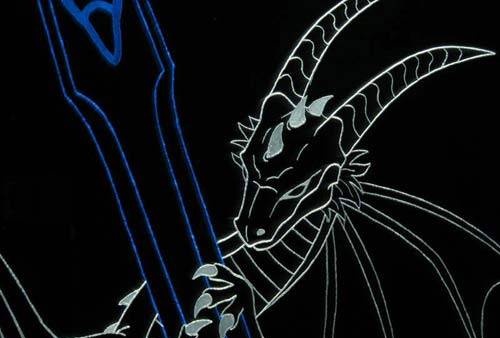
Close-up shot of the drawing.
Please note that the blue and white colors overlap each other slightly. In the photo the blue looks very patchy, but in reality it looks much better. This happened because white is shown here on the “right” side, and blue on the “wrong side”.
